Spotlight on Vic Dina
Vic Dina is an at-sea technician for the University of Santa Barbara’s Carlson Microbial Oceanography Lab collecting their Dissolved Organic Matter (DOM) samples.
After the long transit that began this expedition, we have been working on the magic of science as we headed back north along our station line.
Most of the parameters we are measuring are collected and analyzed on board, so lab teams usually operate in teams of two on a 12-hour on/off schedule. Each team consists of one member who works on the day shift (noon to midnight) and their counterpart who works on the night shift (midnight to noon), so that sampling continues throughout the day and night. In my case, though, I simply collect samples from each cast to be shipped home at the end of the cruise to be analyzed for Dissolved Organic Matter at our lab onshore. This means I’m the only person in my lab and work closer to four hours on duty and 4-6 hours off (give or take). When things are running smoothly, we can complete about 3 CTD casts in a 24-hour period, and my schedule revolves around them.
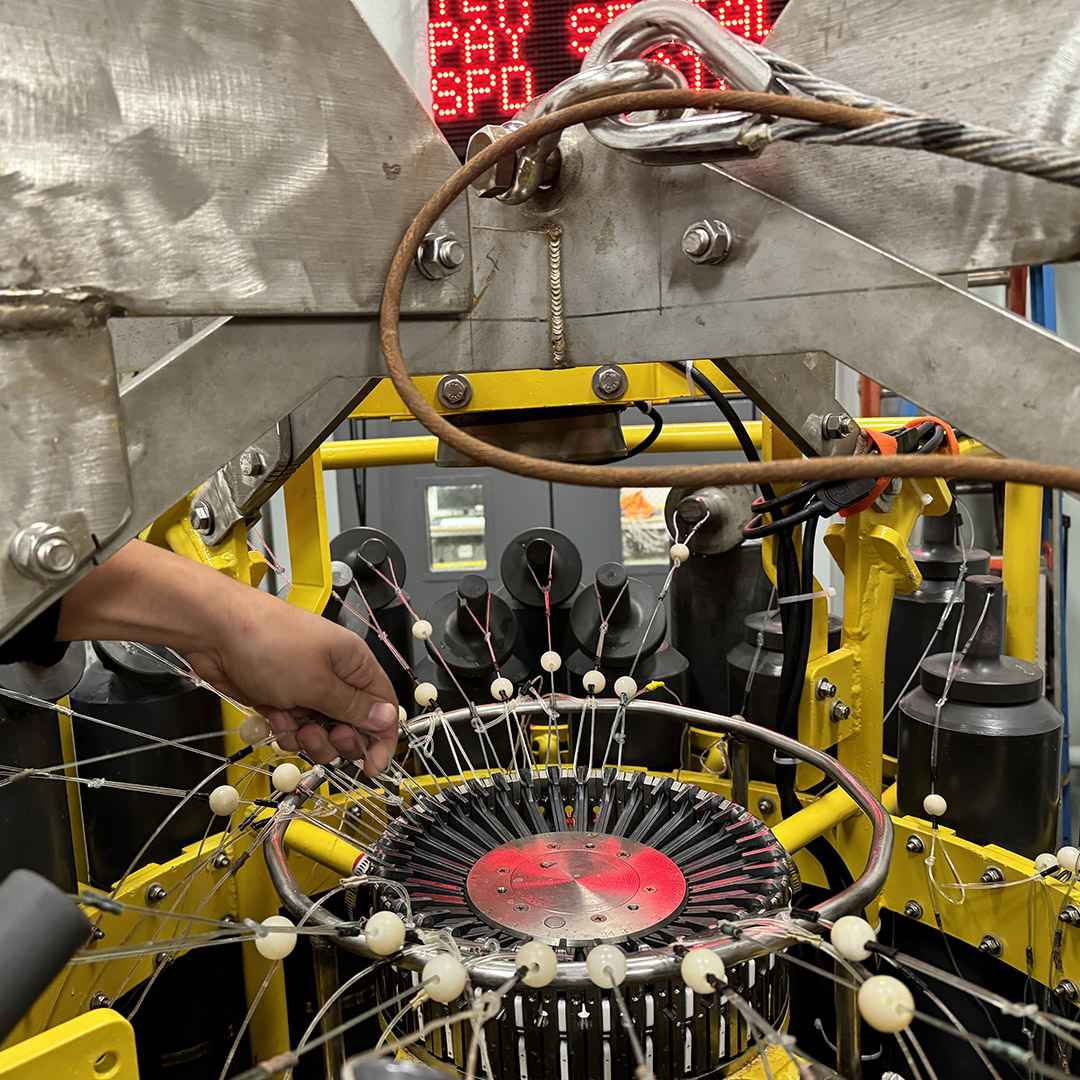
The CTD/Rosette being prepped for a cast, with all Niskins open to collect water.
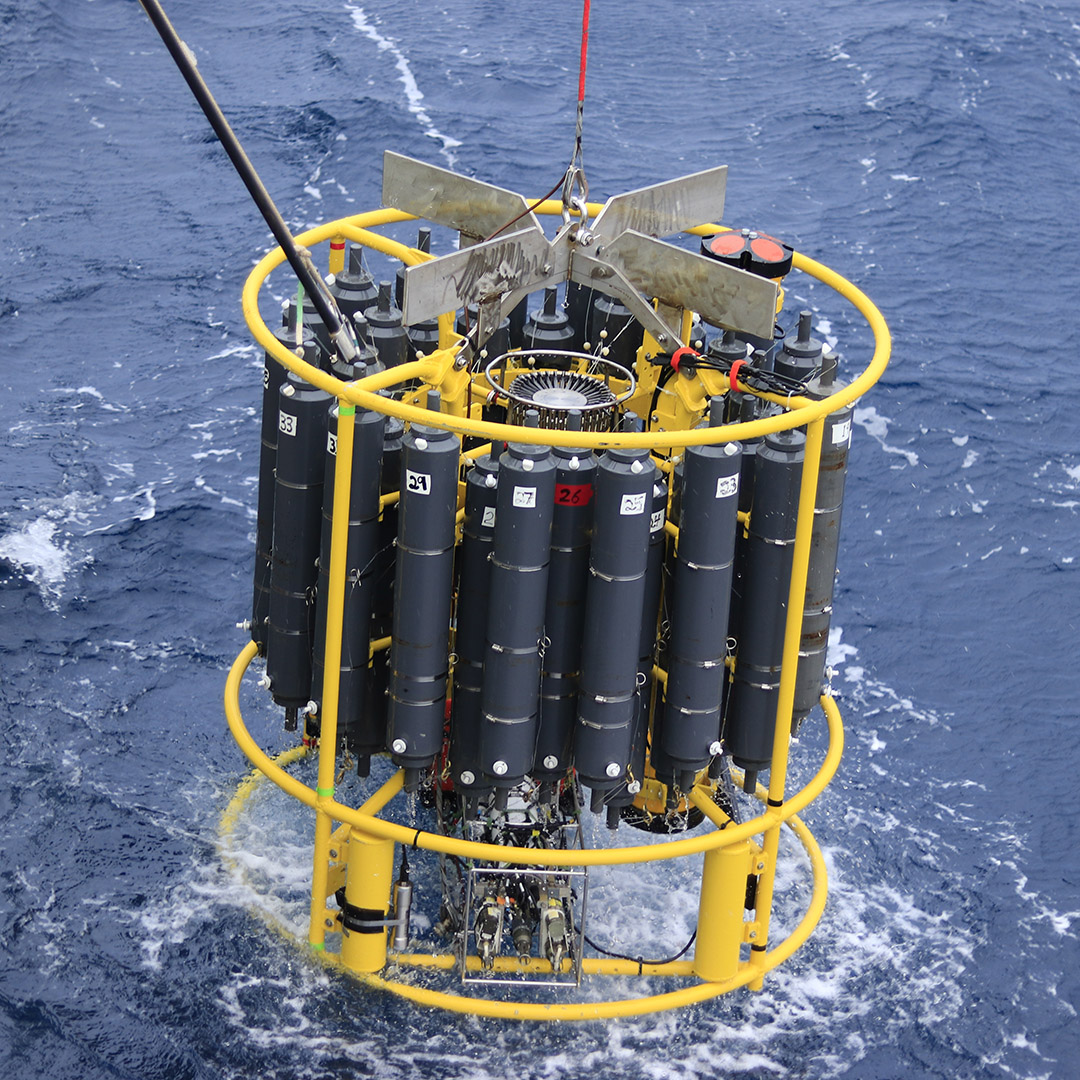
The CTD/Rosette being recovered by deck crew after the cast.
I start work whenever the CTD is returning to the surface by filling out my sample logs and vials and then preparing filters to collect samples in the surface region. The filters work kind of like coffee filters—they separate larger pieces of carbon (particulate organic carbon) from the smaller pieces that are of interest to us (the dissolved carbon). These smaller organic components aid in our understanding of the role marine microbes play in the cycling of elements within the marine ecosystem. Additionally, dissolved organic carbon can alter the chemical composition and light penetration of the ecosystem. We only need to use the filters for samples collected in the upper 500 meters of the water column because the particulate matter in deeper samples does not affect our measurements. Since our first few stations of the cruise were a bit shallower while we were on the continental shelf of Antarctica, I had to prepare more filters for those casts.
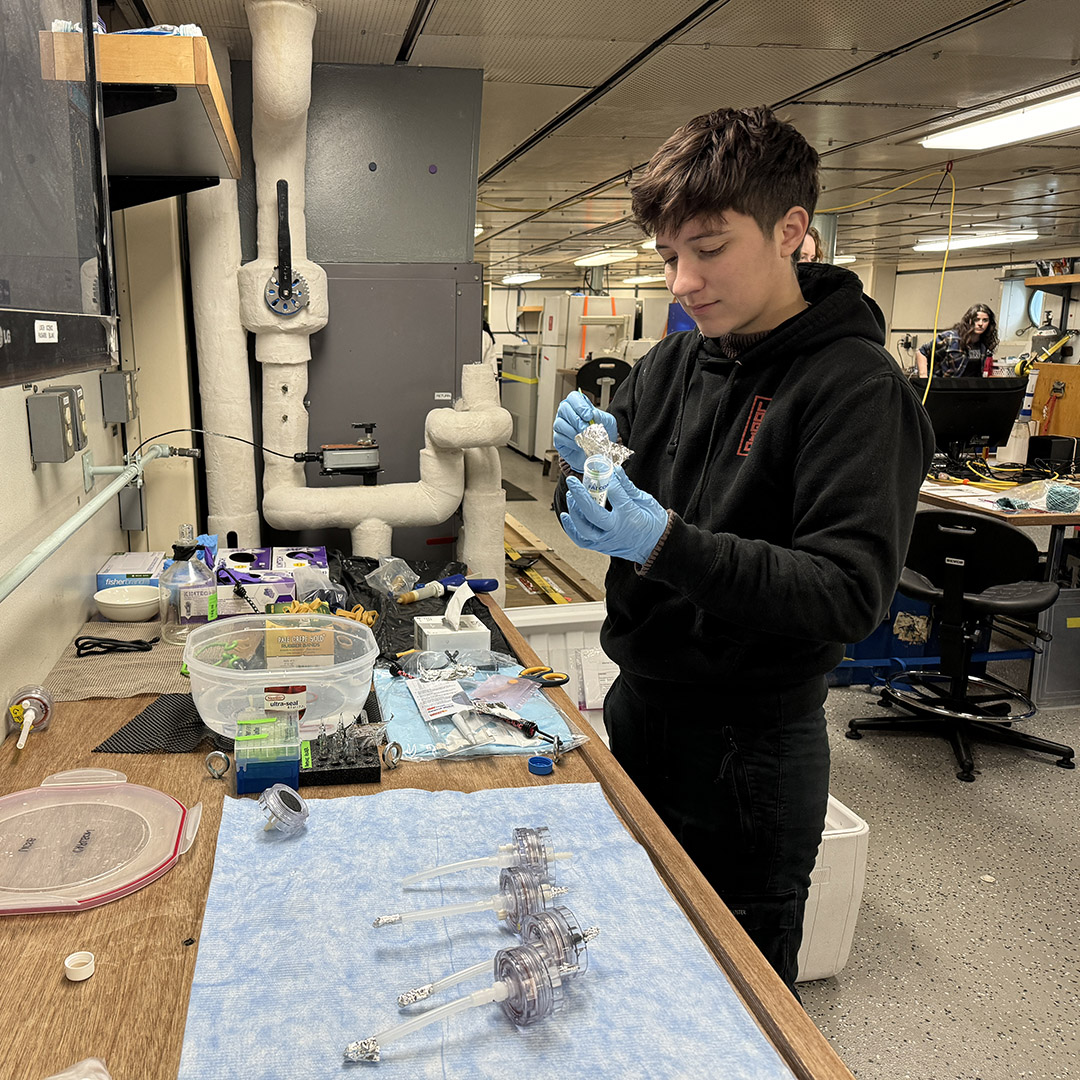
Vic Dina preparing filters for the collection of DOM.
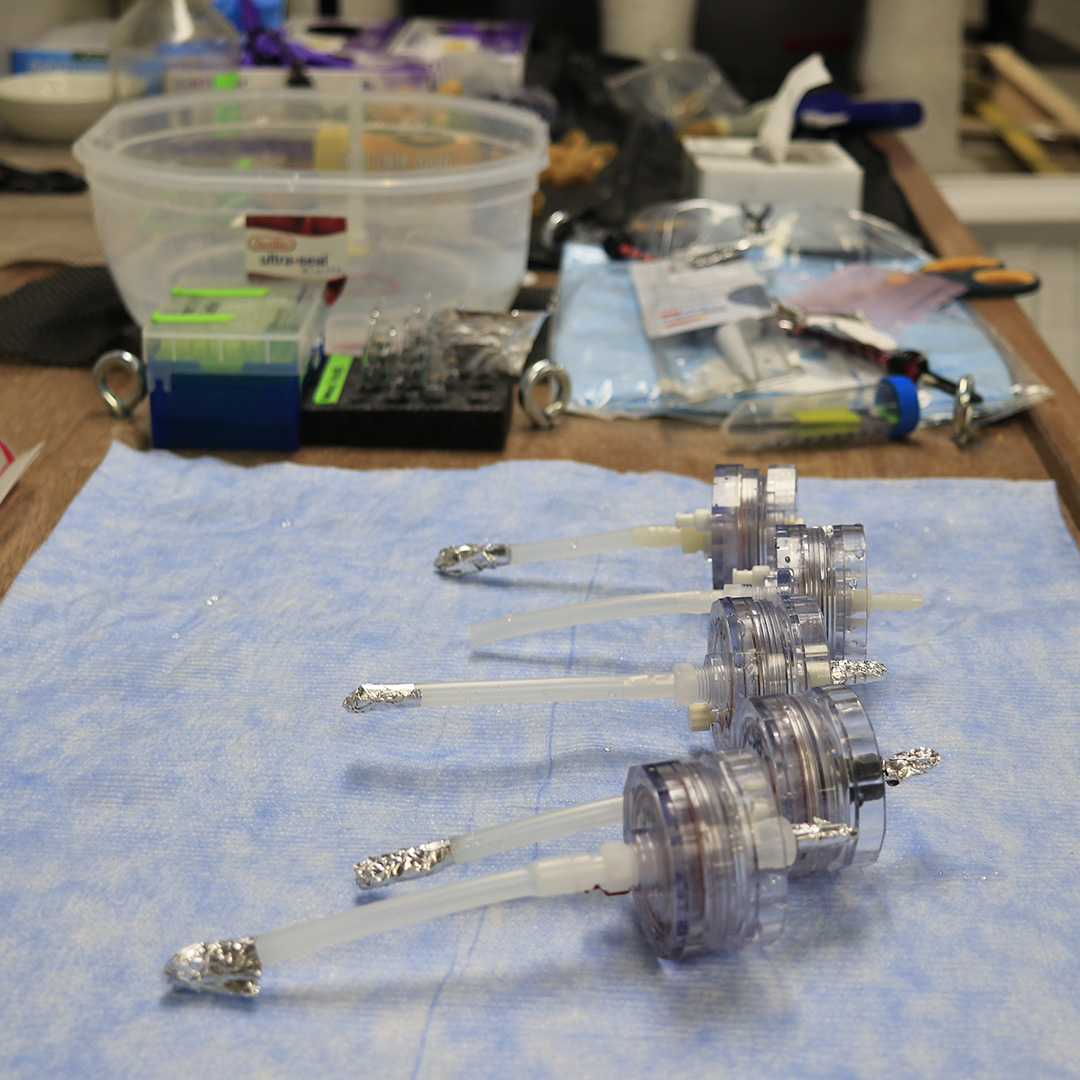
Filters are needed for samples collected in the upper 500m of the water column.
Once the CTD/Rosette returns to the surface, it’s time for me to collect samples.
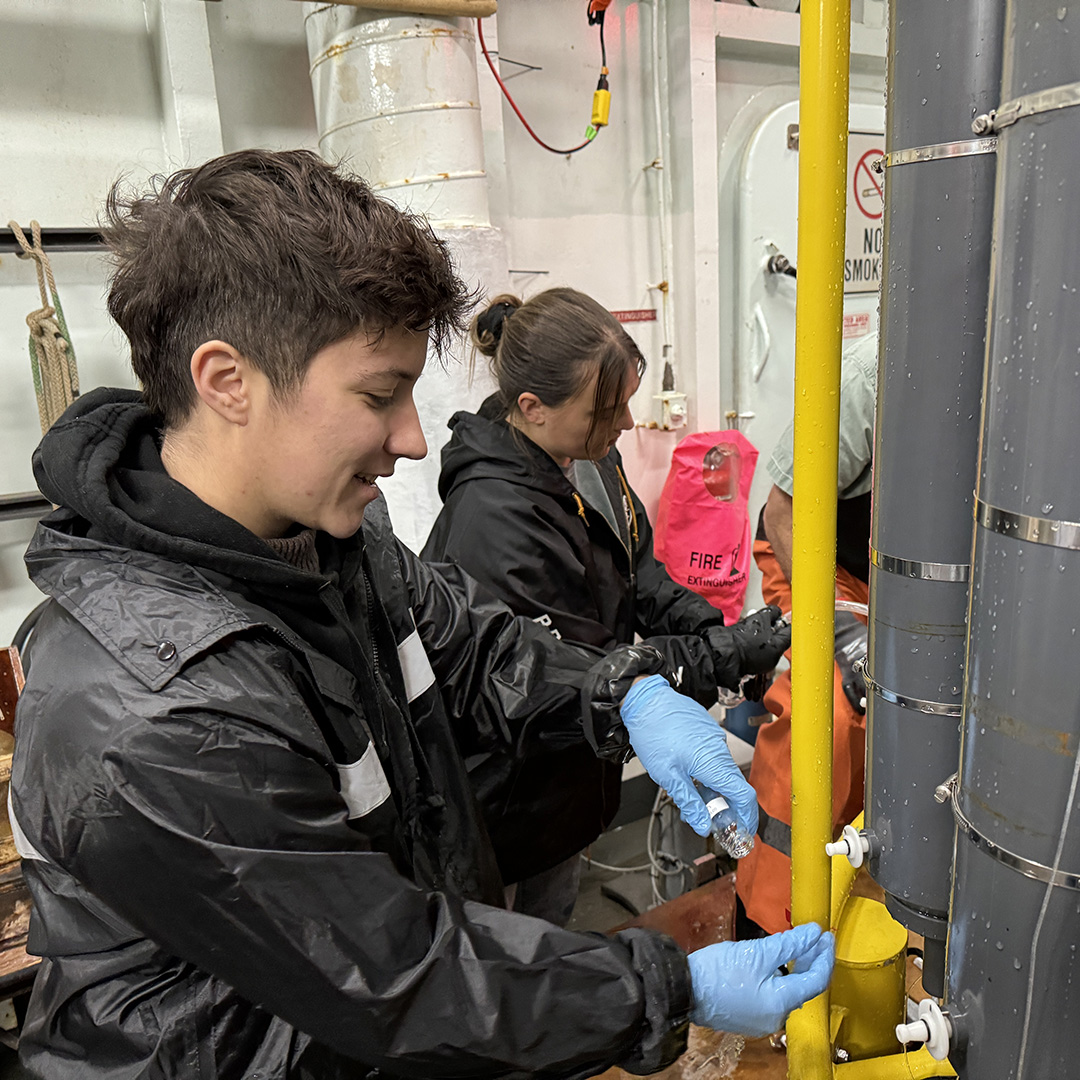
Vic Dina collecting water for measuring DOM.
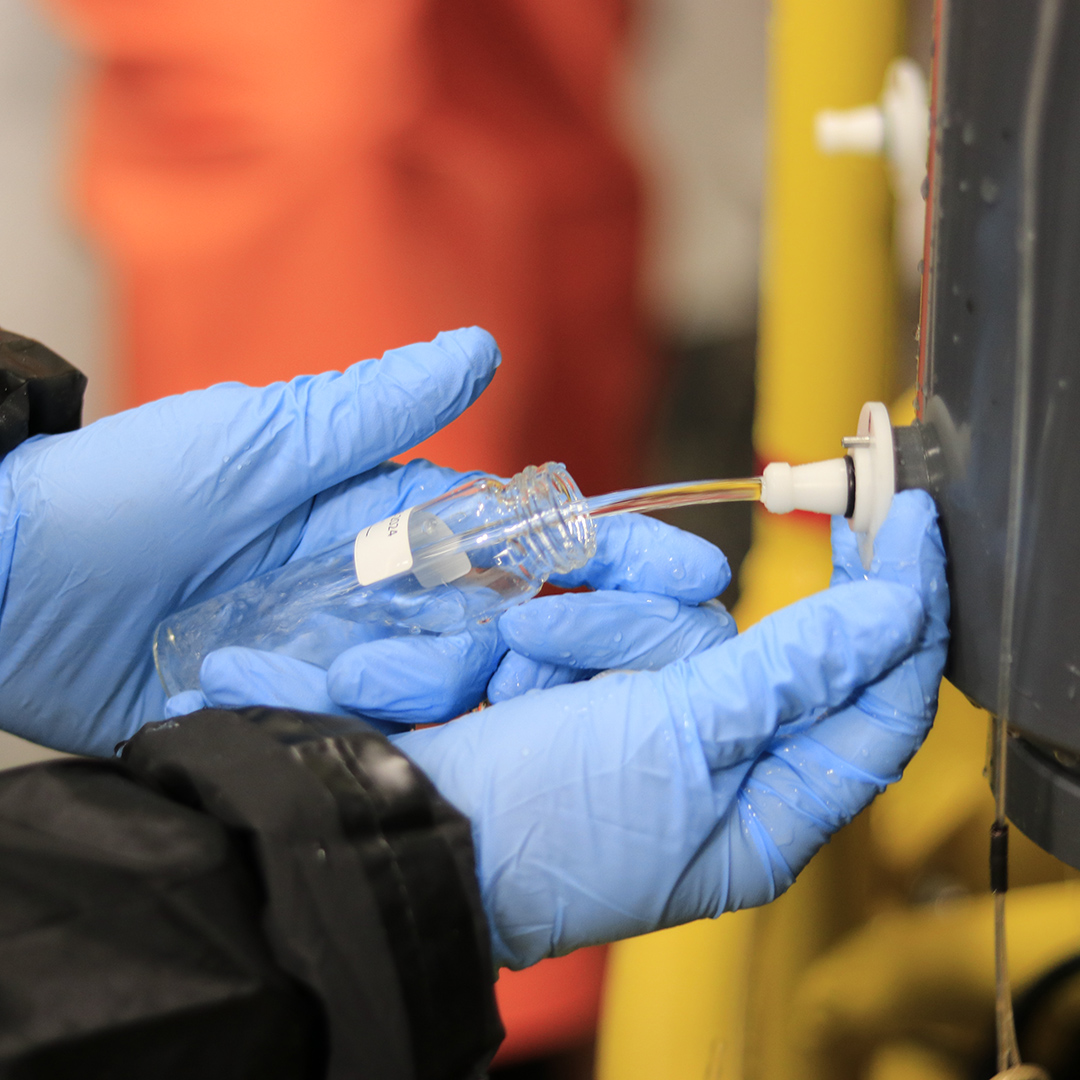
Water being collected from a deep-water Niskin on the CTD.
Now that we have all that water, we need to process samples to safely ship home. Back in the lab, it is time to treat my samples with 4M HCL acid to stop any biological processes and prepare them for shipment and analysis back on land. There is a multi-step protocol that I repeat with every sample to ensure that all samples are collected, prepared, and packaged for shipment identically. One thing scientists must be good at is problem-solving and dealing with obstacles that come up despite all the best preparation. On this cruise, I have learned how poorly things like tape or adhesives work on samples vials and containers in frigid weather conditions. Luckily, our extraordinarily well-prepared and collaborative ship crew members are always available to help when needed.
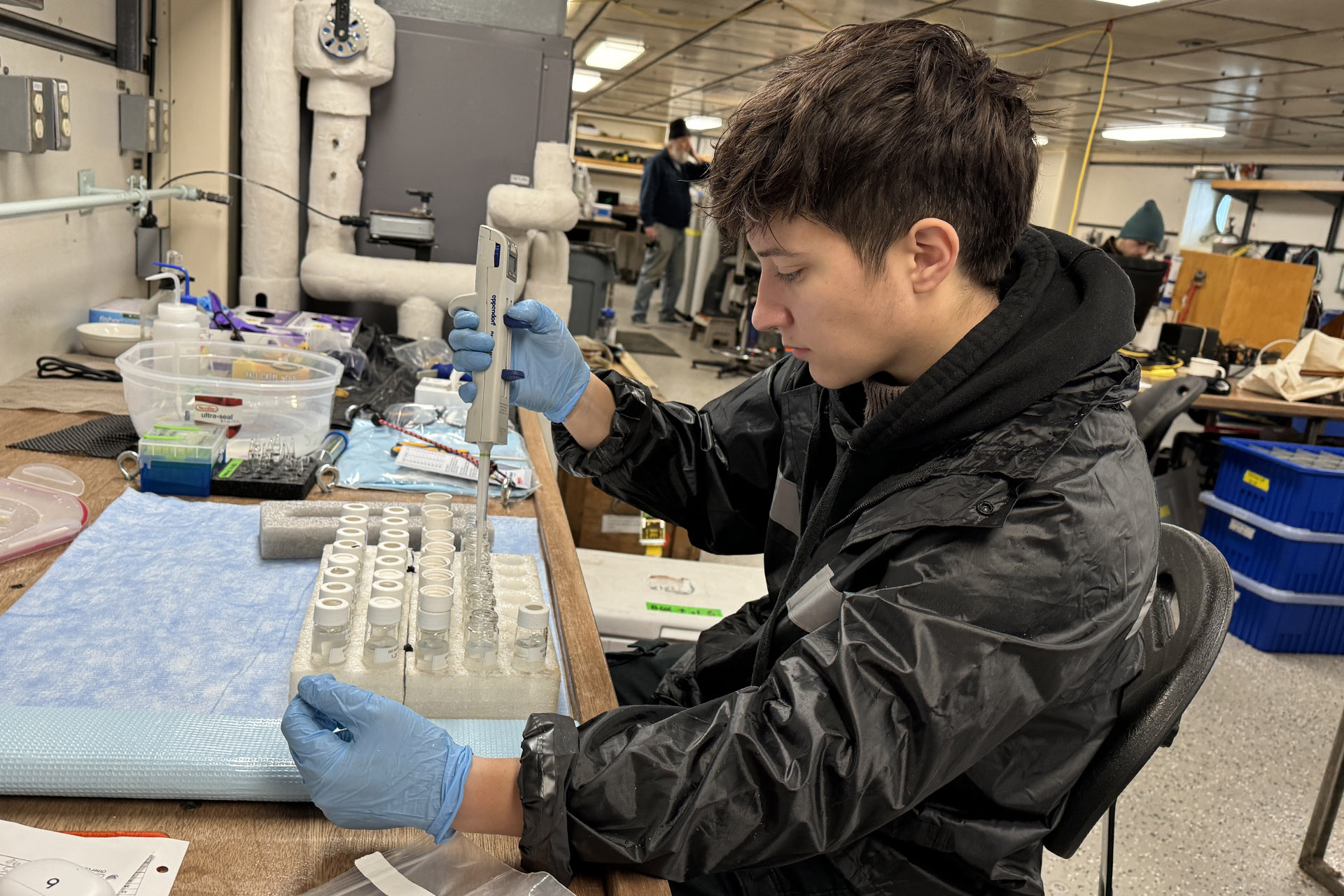
Acidifying a full cast of samples with 4M HCL acid.
Finally, it is time for me to wrap up my shift by maintaining an electronic log as a backup for my paper logs and writing blogs like these to keep people up to date with what I am doing! In my free time, there is a surplus of books in the library, crafts to be made, and an upcoming tournament amongst scientists beginning soon!
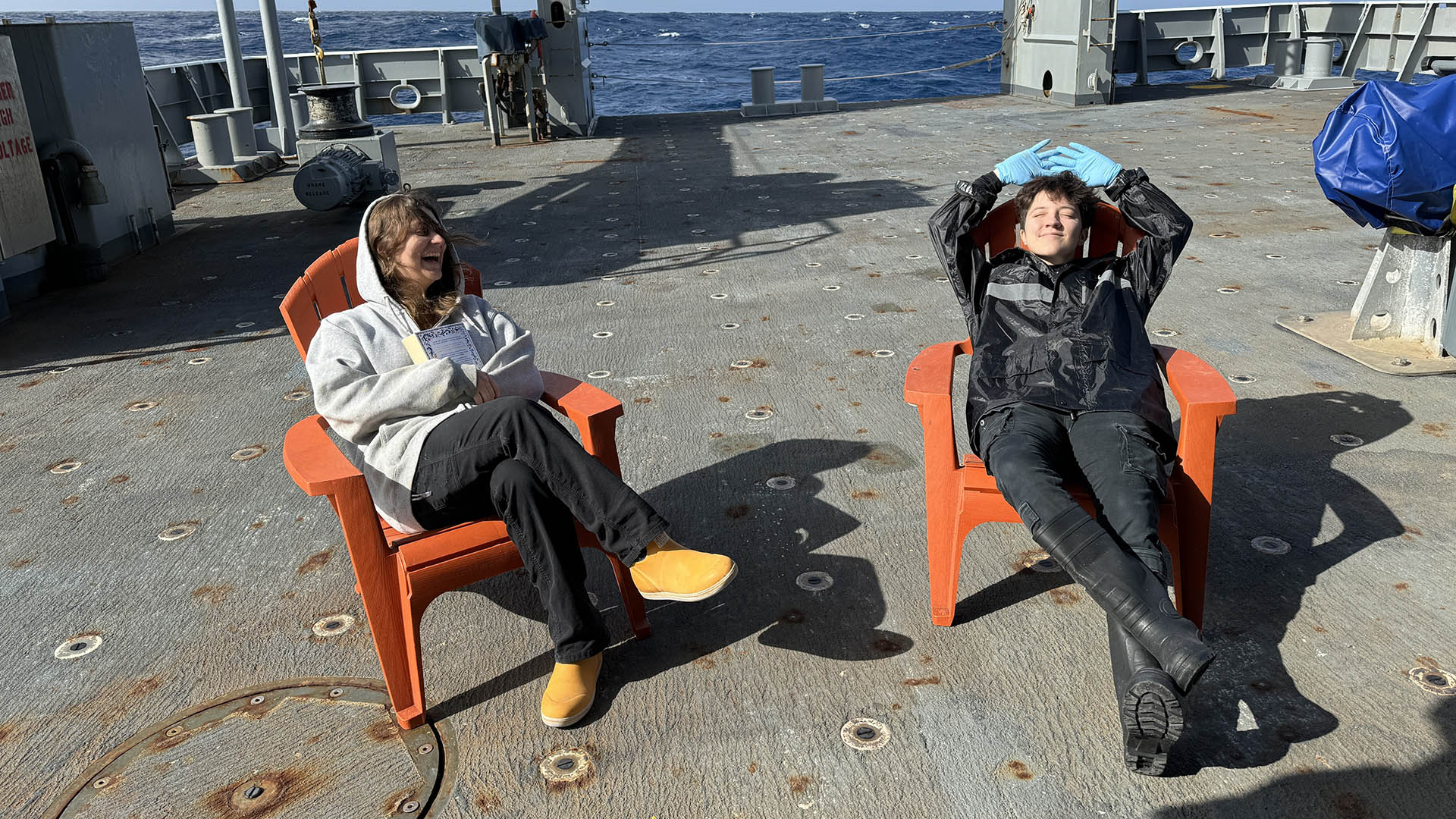
Vic enjoying some sun on the back deck of the R/V Thompson.
- Expedition Logs
- 2024 GO-SHIP I08S
- I08S Intro
- Float Checks
- Alphabet Soup
- Trieste
- Weekly Update #1
- Nurse Jennie
- Raphael
- Jess – Salts
- Fishstick!
- Cora – pH
- Swampii
- Southern Ocean
- Seawolves Explore
- Ferruccio
- Abby – pH
- Belmont Bullkelp
- Onboard Sampling
- Vincent – Dissolved Oxygen
- Elisa – Dissolved Oxygen
- Marshal – Alkalinity
- Ruth – CTD
- Vic – DOM
